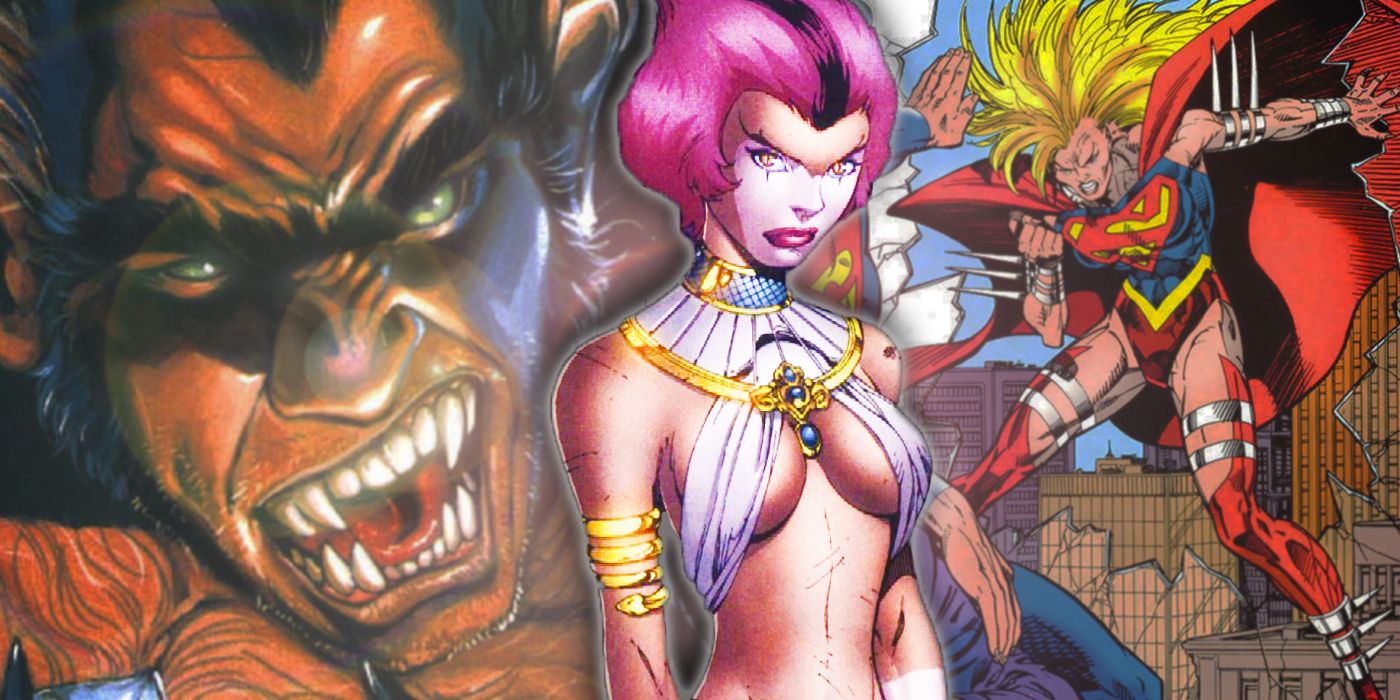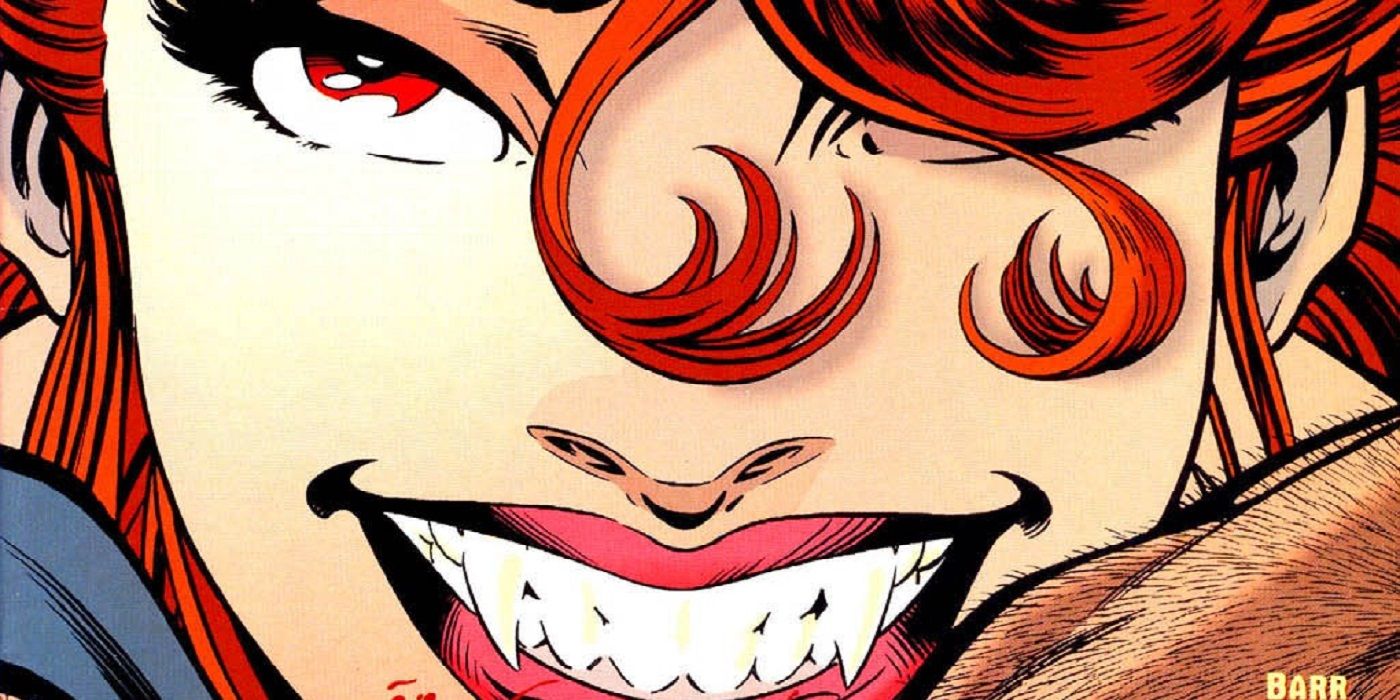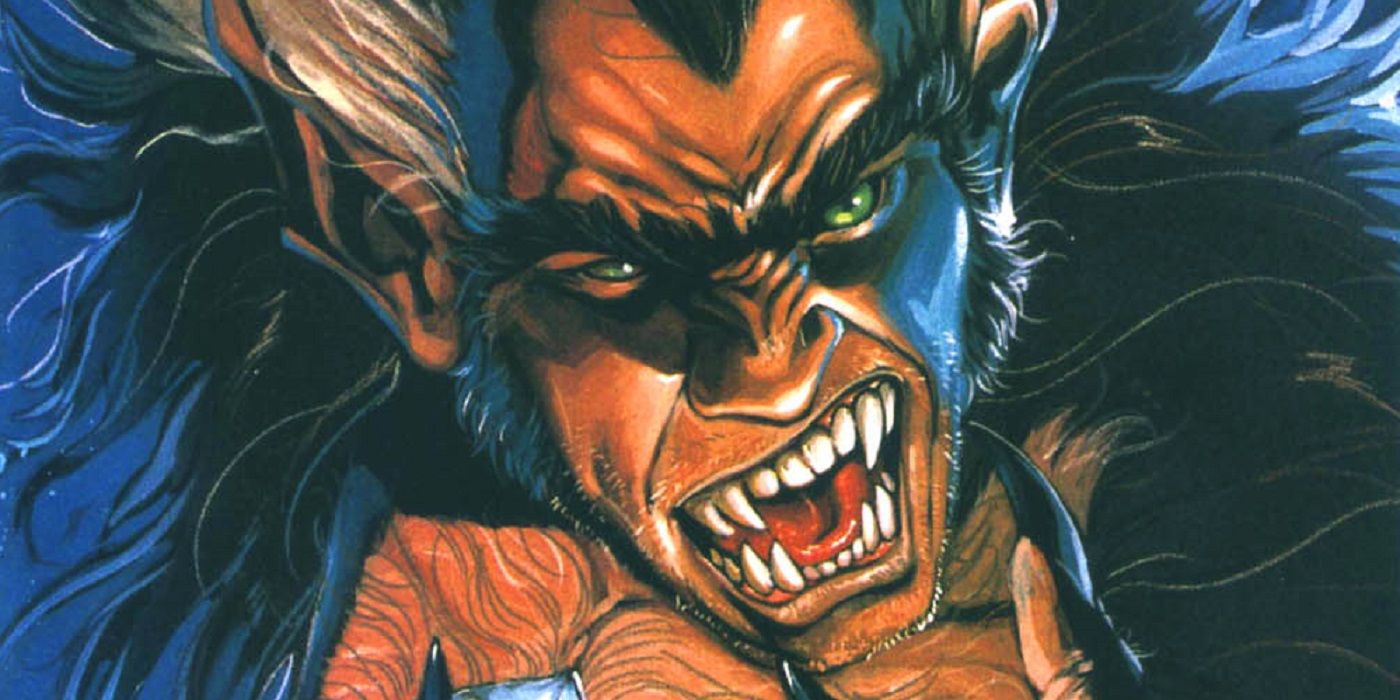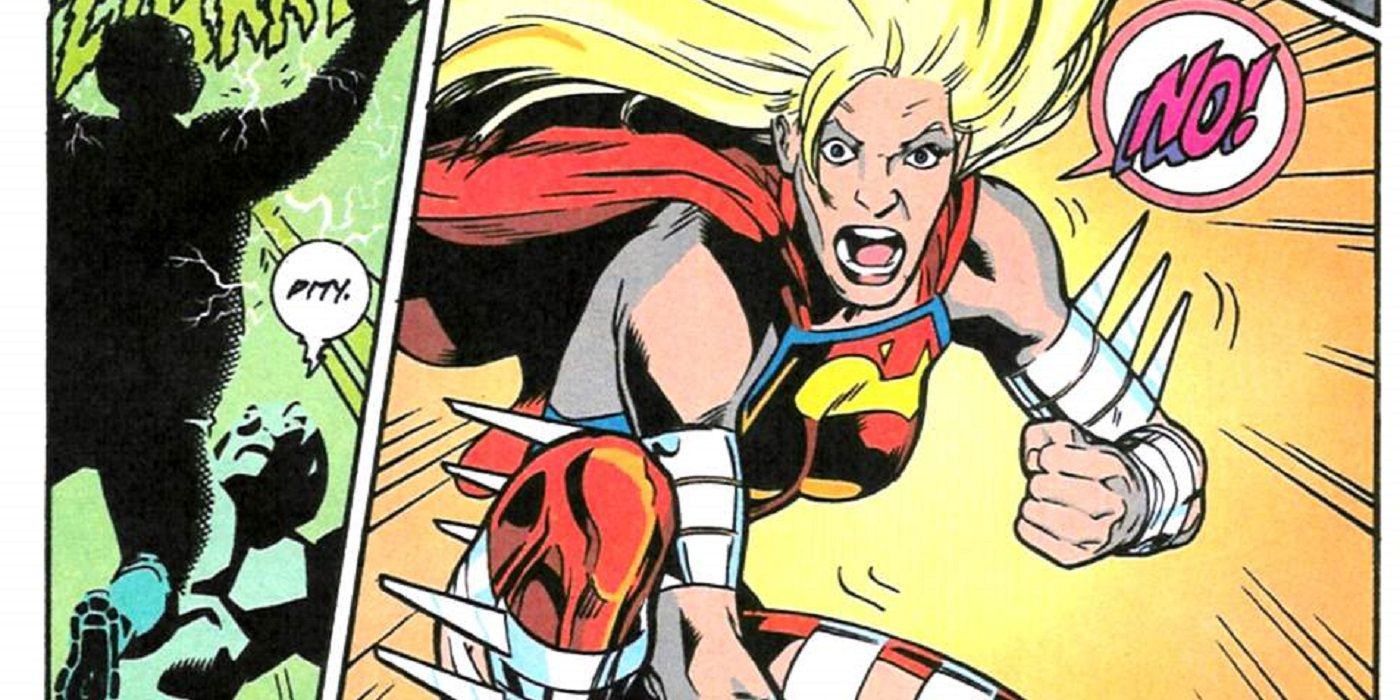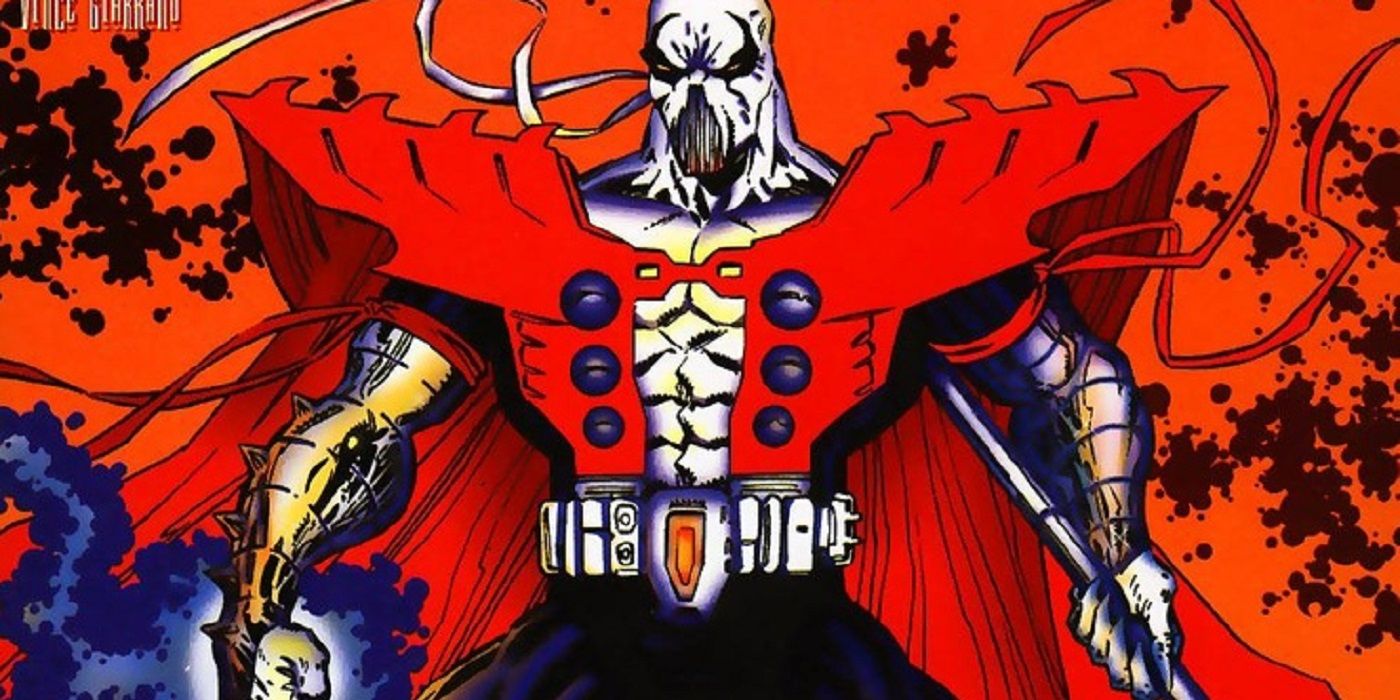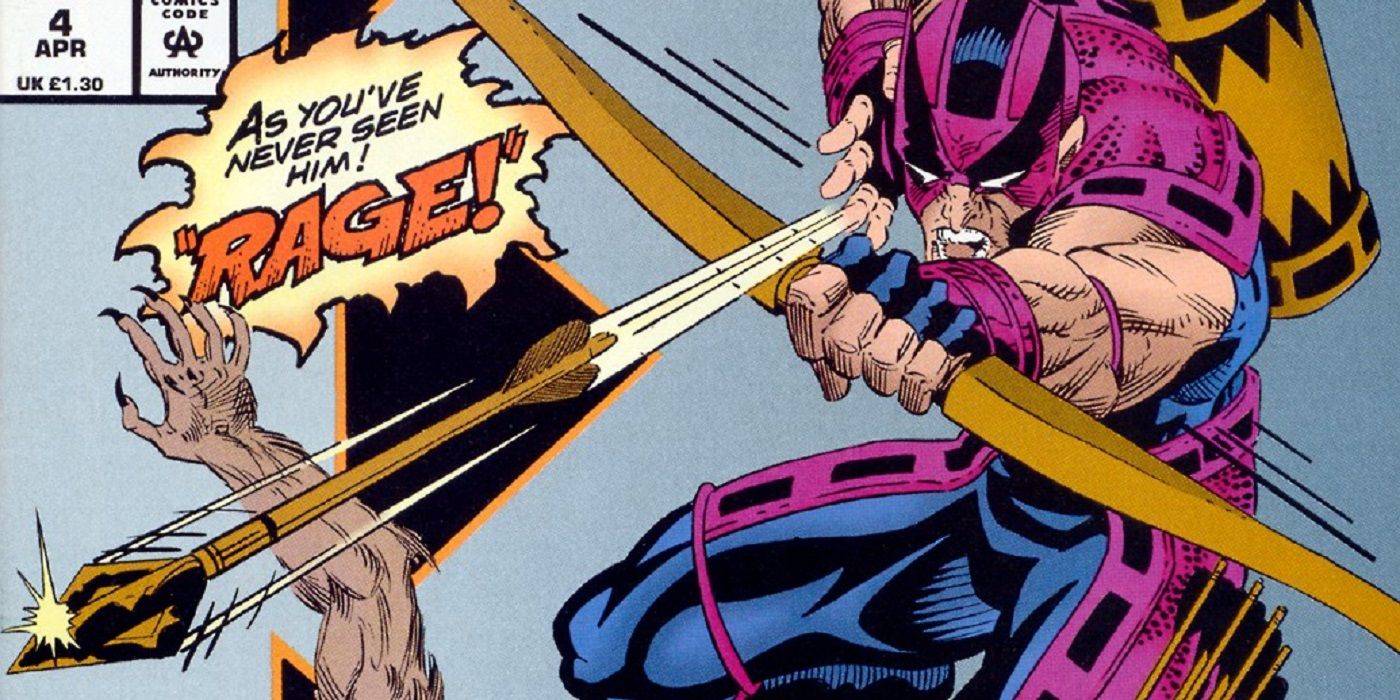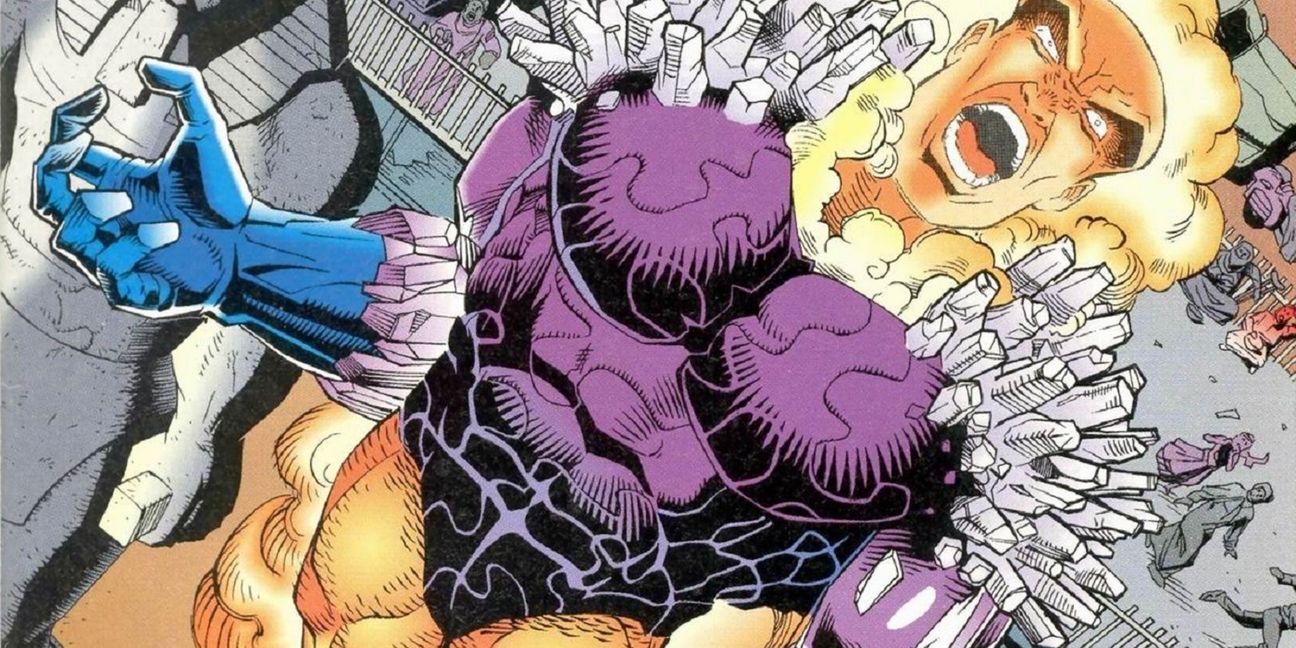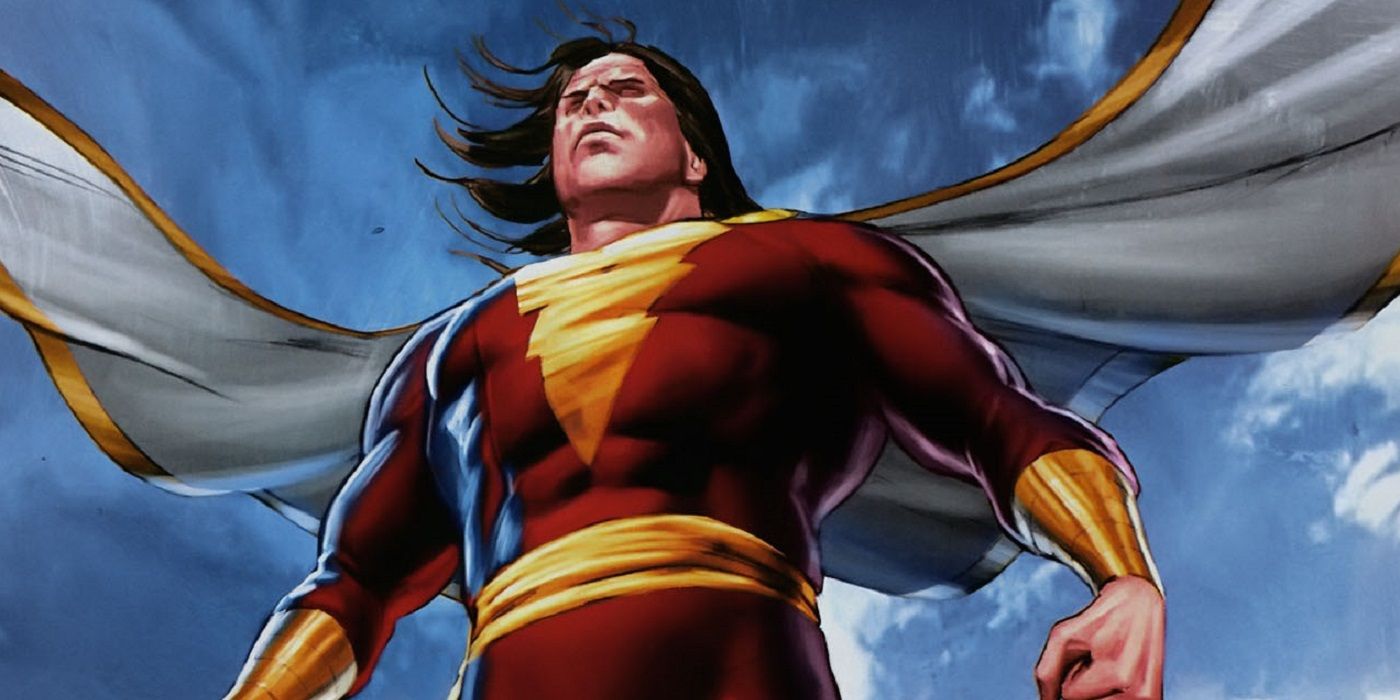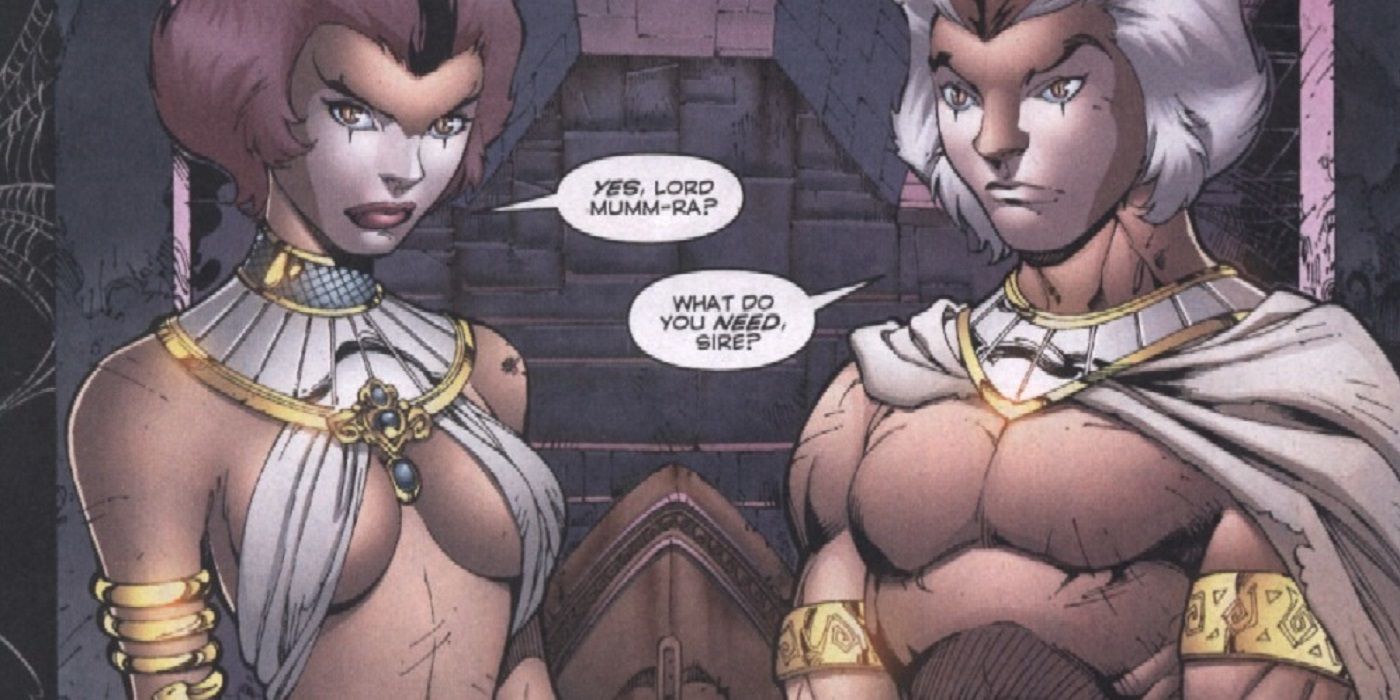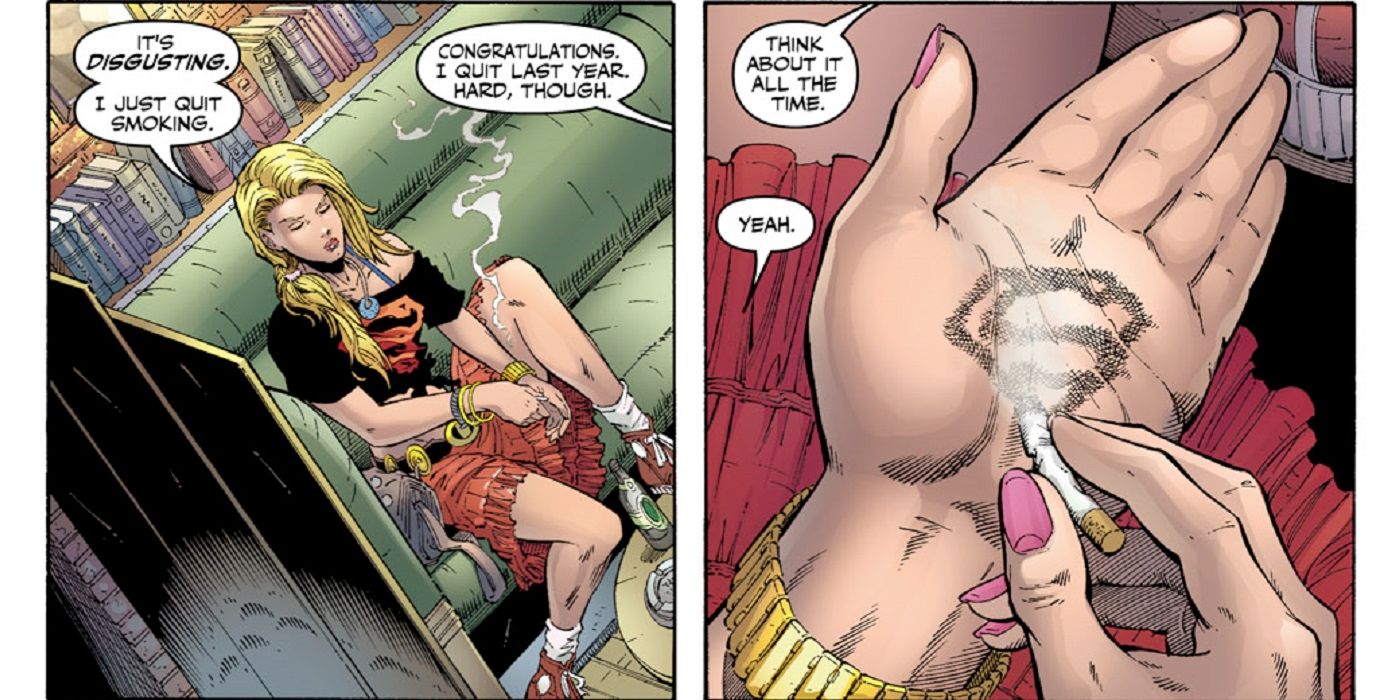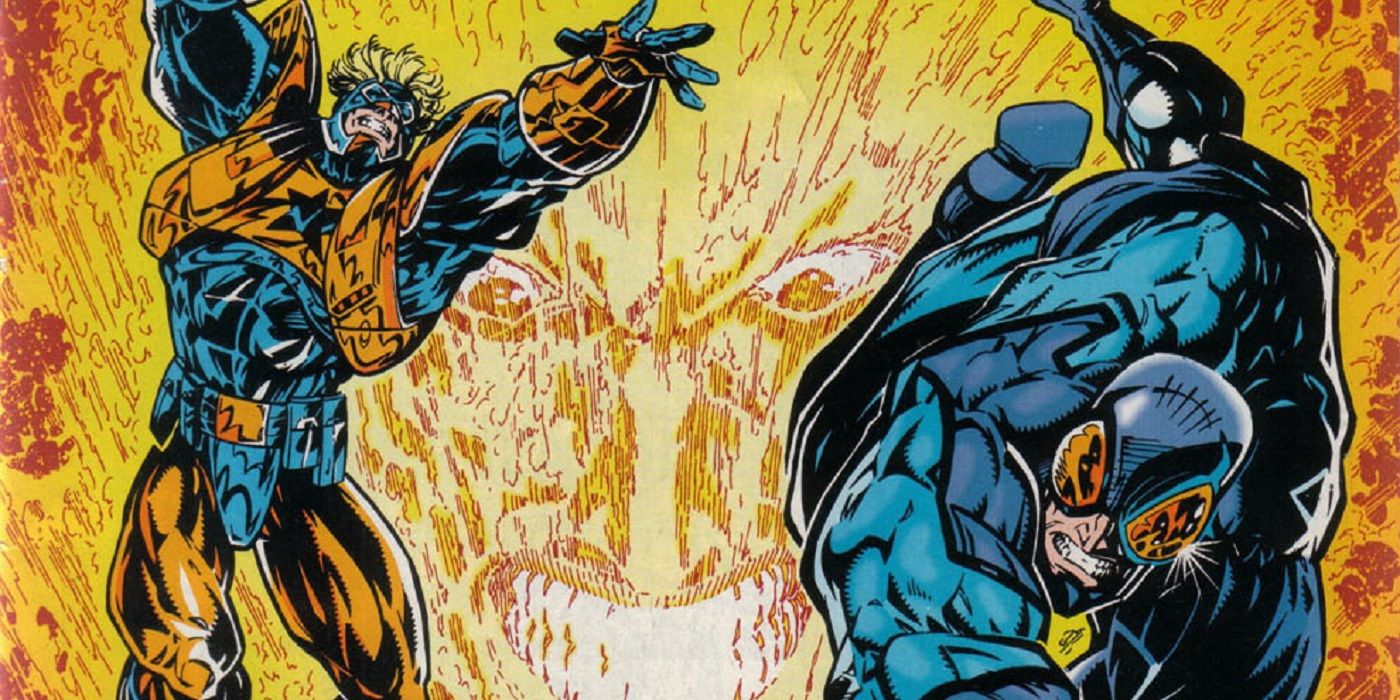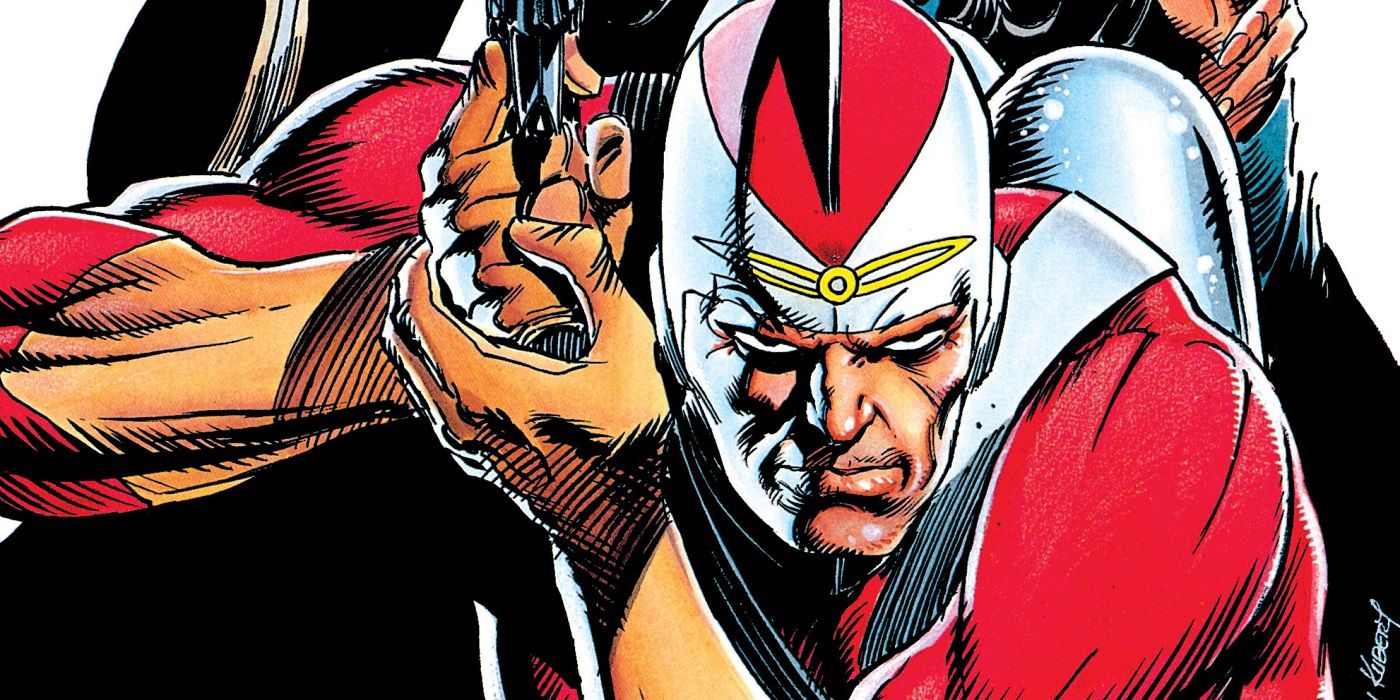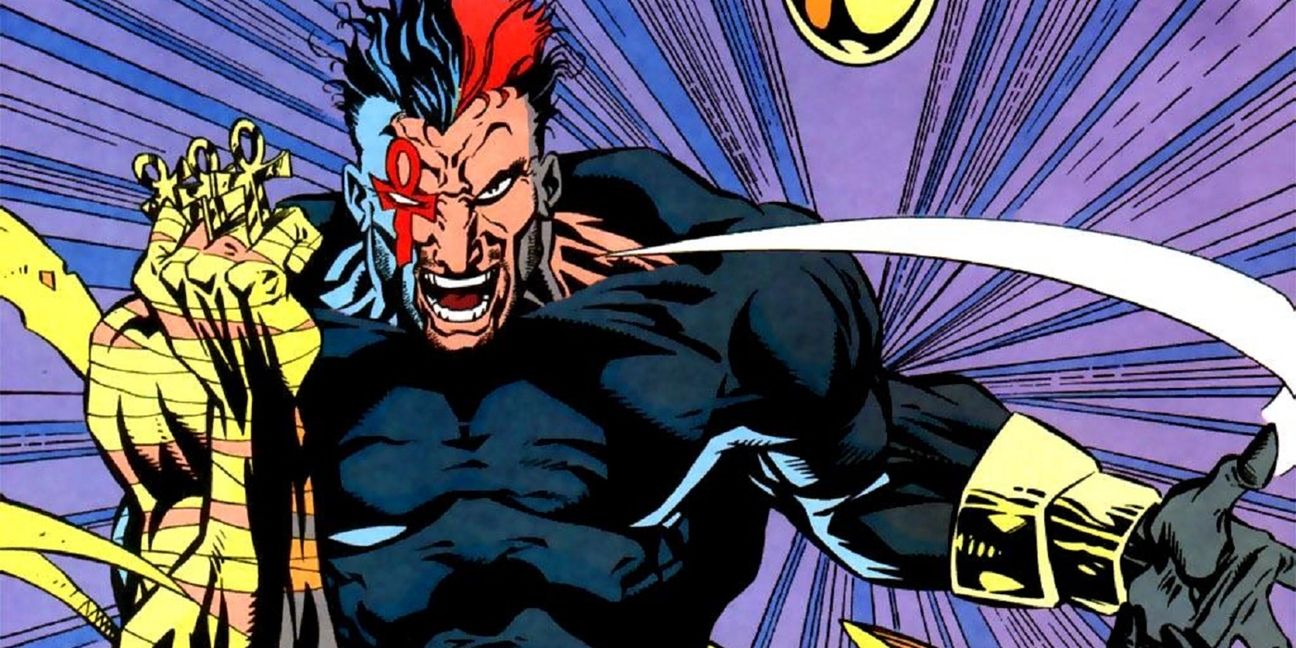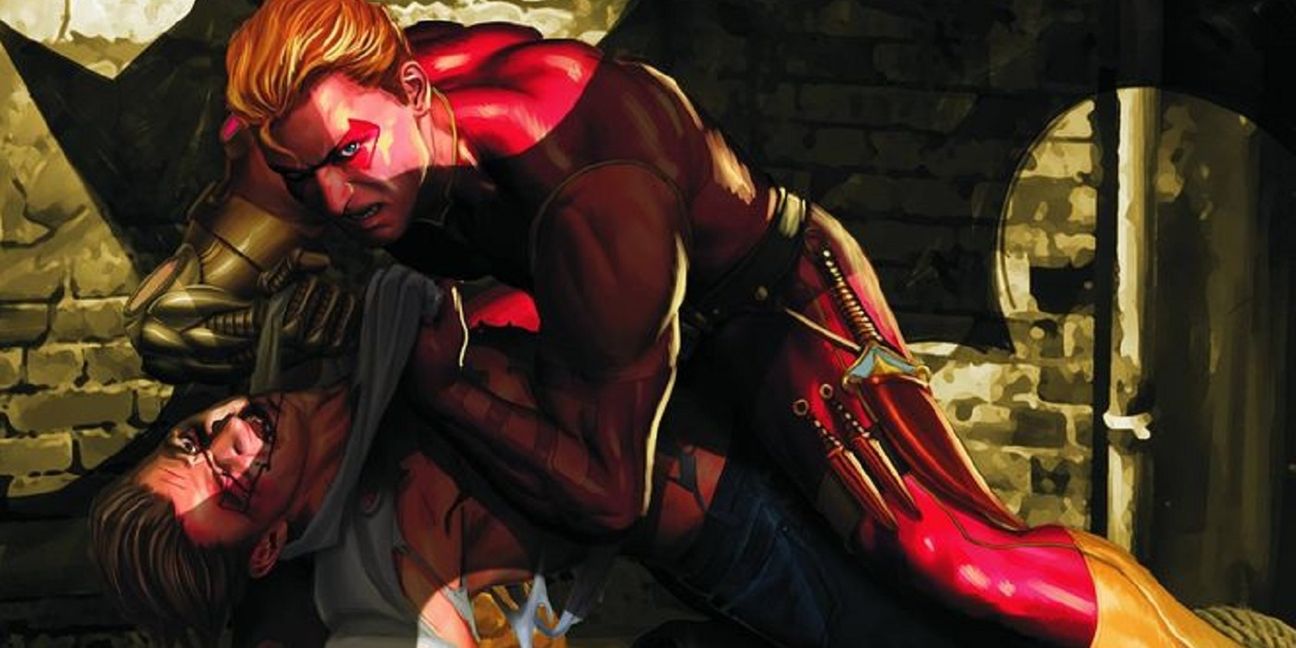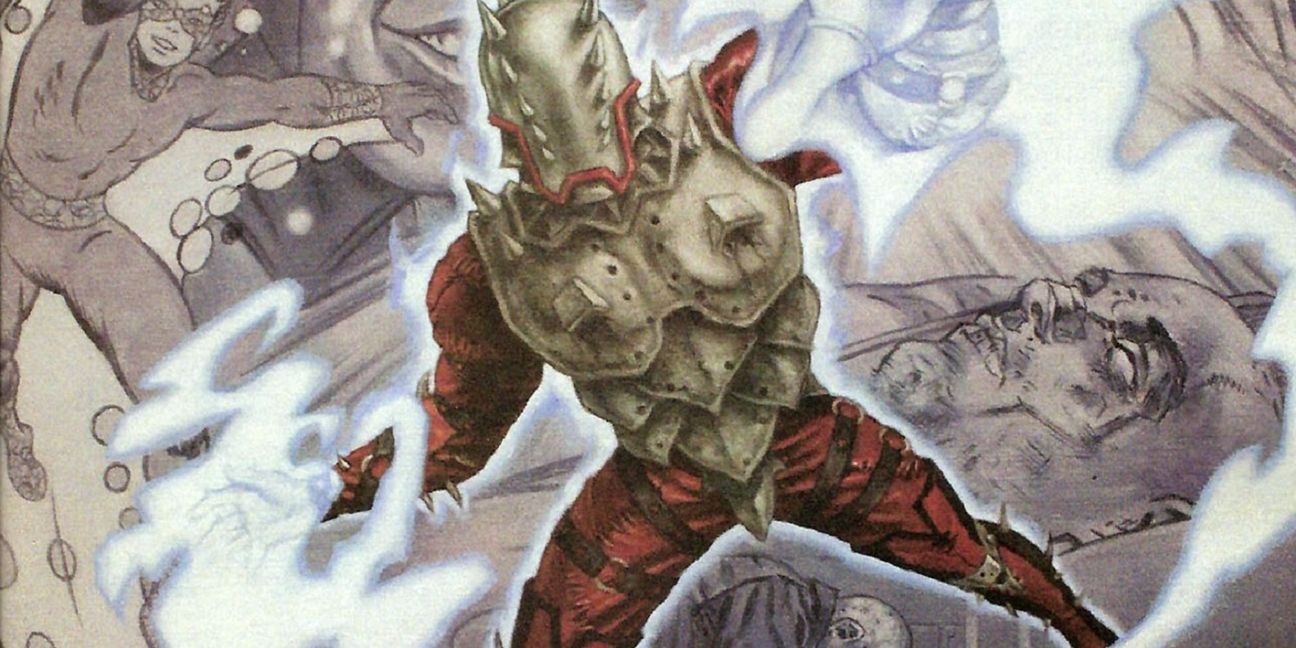Let's face it, "grim and gritty" revamps of comic book characters happen all the time because, for the most part, they work. People cared more about Archangel than they did about Angel. People cared about X-Force more than the New Mutants. People cared about long hair, trenchcoat and sunglasses Nomad a lot more than they cared about the previous version of Nomad. The reasons that these things become cliche is because they are used so much, but again... they work!
RELATED: The Worst Superhero Revamps Of All Time
However, that's not to say that they always work. Sometimes grim and gritty reboots fail and when they fail, they often fail miserably. We're going to take a look at 15 times that a grim and gritty reboot failed. Do note that we're not talking about temporary changes meant to be "bad" (like hot pants Wonder Woman, Azrael Batman and barely-wearing-any-clothes Invisible Woman), we're talking reboots/revamps that were meant to be permanent when they were introduced. We'll rank them in order of how ill-conceived the change was.
15 VAMPIRE LOOKER
The Outsiders, for the most part, had an impressively consistent membership. The original five members of the group (Metamorpho, Geo-Force, Katana, Black Lightning and Halo) remained throughout the series' run (original team leader, Batman, left after a few years, as the team moved past being "those other guys with Batman"). Their major new addition was Looker, a mousy woman whose powers kicked in and transformed her into a beautiful woman with mental powers (telekinesis and telepathy).
When the series ended, she went into comic book limbo but was brought back when the Outsiders relaunched in 1993. This time, though, Looker was transformed into a vampire and now had a dark, edgier side to her personality. This Outsiders series didn't last that long and Looker's vampirism has not played much of a role over the years.
14 MUTATED TIMBER WOLF LOST IN THE 1990S
By the early 1990s, Wolverine's popularity had reached such a high level that he seemed to guest-star in every third Marvel comic book of 1993. DC, meanwhile, saw the popularity of the character (and similar characters like Sabretooth, Wild Child and Wolfsbane) and decided to take one of their classic Legion of Super-Heroes characters, Timber Wolf (who predated Wolverine and had similar powers to the Canadian mutant) and mutate him into a Wolverine-esque character.
Timber Wolf had already been transformed into a simple-minded monstrous figure known as "Furbll," but was then turned back into his a form closer to his normal self. He was so aghast at what happened that he traveled to the past (our present) and became a dark protector of the innocents. He had his own miniseries but it did not go anywhere and Timber Wolf ended up back in the future soon enough.
13 SUPERGIRL SHOWS HER SPIKY SIDE
During his last storyline on Superman, John Byrne brought Superman to an alternate "pocket universe" that was ravaged by three alternate reality Kryptonians. That world's Lex Luthor created a powerful artificial "protoplasmic matrix" being that he turned into a superhero who could shapeshift and take on human form. She took on a costume like Superman's and became the first Supergirl on Earth following Crisis on Infinite Earths (which had wiped the original Supergirl from continuity).
In an attempt to make this Supergirl a bit edgier, it was revealed that severe strain could cause her to sort of snap and take on a different persona, using her shapeshifting powers to transform herself into a spiky version of her normal Supergirl look. This take was not used that often and eventually she was instead merged with a human woman to become a new take on Supergirl by writer Peter David.
12 THE WILD HUNTSMAN MANHUNTER
Following Zero Hour, DC decided to launch a series of new titles out of the event, including a few titles that featured new, edgier takes on old characters. One of those titles was James Robinson and Tony Harris' Starman, which became an instant classic and one of DC's most acclaimed titles for a number of years. A less successful title was Steven Grant and Vince Giarano's Manhunter, which took the name of the established DC character but not much else.
This Manhunter was a musician who cut a deal with the magical "Wild Huntsman" to protect him and his girlfriend and in exchange he would have to hunt down people. He decided that if he was going to do it, he might as well make it criminals. Giarrano's art was over-the-top and really edgy, but the character did not catch on.
11 HAWKEYE THE HUNTER
In 1993, Marvel decided to kill off Hawkeye's wife, Mockingbird, in Avengers West Coast #100, right before re-launching Avengers West Coast as Force Works. Hawkeye left the team after the death of his wife and headed to the woods where he moped around for a while before being brought into one of your standard supervillain conspiracies. Hawkeye got a new costume, but the most important thing was that he had a new edge to him, as the death of his wife really traumatized him.
Marvel really tried to push an angle called "Brothers in Arms," where Hawkeye, War Machine and USAgent were sort of an informal, grim and gritty alliance out of nowhere. It did not last for long and Hawkeye was soon back to his normal, wisecracking attitude.
10 MUTATED METAMORPHO
When he was introduced way back in the 1960s, the hook with Metamorpho was that Rex Mason was saved from death by being transformed into the monstrous being known as Metamorpho, but despite gaining control over all of the elements, he was no longer human and it bummed him out, especially as he felt he could not be with his longtime girlfriend, Sapphire Stagg. Rex and Sapphire actually got married anyways and had a son, Joey, with abilities just like his father.
Eventually, Rex and Sapphire broke up and Rex joined the Outsiders and then Justice League Europe. Once with the Justice League, he was eventually mutated more into a darker, more twisted version of his normal self. It was such an odd choice -- he was already sad because of his previous state, what was the point of making him even more strange-looking? It didn't add anything!
9 THE STRANGENESS OF STRANGE
In the 1990s, there was a big push to try to tie together comic book titles to create "lines," as the idea would be that if you collected one of the titles in the line, you'd be willing to collect all of them. In 1992, Marvel introduced the "Midnight Sons" line, spinning out of their popular Ghost Rider series, starring supernatural themed characters like Morbius, the Nightstalkers, the Darkhold and the Spirits of Vengeance (which teamed Ghost Rider up with the original Ghost Rider, Johnny Blaze).
Soon, Doctor Strange was pulled into the line, as well, and as part of the tie-in, a new version of Doctor Strange debuted, a superhero-esque character known as Strange, who wore a full mask and was darker and edgier than Doctor Strange. The whole thing was super complicated and was resolved after about a year with a revamped take on Doctor Strange.
8 POST-SHAZAM CAPTAIN MARVEL
For years, DC had been seemingly unsure what to do with their Captain Marvel property. The character was huge in the 1940s, but it was also very much an upbeat, fun series and that did not fit in very well with the era of grim and gritty. Jerry Ordway wrote a brilliant attempt at merging the Marvel Family into the DC Universe in Power of Shazam!, but that series was also not particularly grim and gritty.
Thus, in 2006, DC did a gritty reboot, with Freddy Freeman being forced to fight black magic for the right to become the new magical champion of the gods, who have taken new, modern forms. Freddy also took on the name Shazam, as DC was sick of calling the character Captain Marvel since Marvel owned the trademark to that name. This new Shazam went nowhere fast.
7 THUNDERCATS: THE RETURN
In 2002, Wildstorm decided to bring back the characters from the Thundercats TV series into a new comic book series set after the events of the original show. The initial miniseries ended with Lion-O entering the Book of Omens to complete his training. He exits the Book of Omens five years later in the follow-up miniseries, Thundercats: The Return (by Ford Lytle Gilmore and Ed Benes) and things have gone to hell in his absence.
Mumm-Ra has not only taken over, but the now adult Wily-Kit and Wily-Kat serve him as slaves in scantily clad outfits. Cheetara is tied up in a similarly scantily glad outfit and tortured (with it heavily implied that the torture is sexual in nature). It is a bizarrely dark and twisted take on the Thundercats that did not last that long, as DC only did one more miniseries set in this continuity.
6 SUPERGIRL, SUPERMAN-KILLER
In 2004, DC re-introduced the original Kara Zor-El into their Post-Crisis continuity, as she arrived in the pages of Superman/Batman #8. This Kara Zor-El, though, was much different than the original Kara. She was a good deal darker, as she was seduced into serving Darkseid in her first appearance before being broken from Darkseid's control.
Even when she got her own series, she was edgier, burning her logo into her hand with a cigarette. In one shocking revelation, she learned that she had been sent to Earth not to protect her cousin, Kal-El, but to kill him! These changes, though, were fleeting ones and later writers brought Kara back to a more traditional type of upbeat superhero (complete with shorts under her skirt instead of just wearing underwear).
5 EXTREME BOOSTER GOLD
In the last major Justice League storyline before Zero Hour, the various Leagues teamed up to take on the Overmaster, who was so powerful that he could halt life and death itself. Booster Gold remembered this battle being one that the League won easily, but due to the time variants caused by Zero Hour, their initial battle went horribly, with Booster's arm being torn off and the only thing keeping him from dying is that Overmaster ceased all life and death on Earth.
When the League finally did defeat him, Blue Beetle luckily created an armor that worked as a life support system for Booster. Booster and Beetle then joined Captain Atom in an dark offshoot of the Justice League in a title that almost sounds like a parody of this particular era of superhero comics, Extreme Justice.
4 ADAM STRANGE'S LIFE IS TERRIBLE
During Alan Moore's run on Swamp Thing, he famously revealed that everything we thought we knew about Swamp Thing was a lie, and that rather than a human transformed into a swamp creature, Swamp Thing was a swamp creature that believed that it was human. That shocking revelation went over very well. Later in his run, though, Moore took the same approach to Adam Strange and it did not work as well.
Moore revealed that Rann only brought Adam Strange to their planet because their men were sterile and they needed a human for breeding purposes. They all really despise Adam, but are forced to put up with him for the future of their people. Richard Bruning and Andy Kubert then did a follow-up miniseries where Adam learned the truth and his wife died giving birth to their daughter. It was all way too bleak for such an inspirational hero.
3 THE BOOK OF FATE
Another one of the new, edgy titles that launched out of Zero Hour was Fate. That series starred Jared Stevens, an explorer who was sort of a less ethical Indiana Jones, grave robbing for ancient artifacts. Doctor Fate was badly injured during Zero Hour, so Stevens suddenly gained access to Doctor Fate's helmet, amulet and cloak. However, he was attacked as soon as he got them and the amulet exploded.
Stevens gained magical powers and used the cloak to bind the wounds on his arm and he melted the helmet down to form a magical knife and throwing stars. He then went to work as an agent of Chaos and Order, trying to balance the scales. It wasn't a bad idea in a vacuum, but as a tie-in to Doctor Fate, it was way too grim and gritty.
2 THE FALL OF ARSENAL
In the miniseries Cry for Justice, Roy Harper had his arm sliced off by the villain Prometheus while Roy was a member of the Justice League as Red Arrow. Prometheus then completed a plot that involved the destruction of much of Star City, including the death of Roy's young daughter, Lian! A despondent Roy returned to his former identity of Arsenal. He got a cybernetic arm that caused him pain any time he used it (as Prometheus' blade had nanites on it that kept Roy's arm from fully healing).
Roy turned to drugs to deal with the pain and began to live on the street, eating rats. He found one of Prometehus' co-horts and stabbed him to death with the knives he now carried. It was all ridiculously overwrought.
1 PENANCE
Speaking of ridiculously overwrought, Robbie Baldwin, the New Warrior known as Speedball, was the only hero to survive the explosion at Stamford that kicked off Civil War. Robbie's powers were now out of whack due to the explosion and he awoke to a world that now hated him as they blamed the New Warriors for the explosion.
Robbie continued to fight off any accusation that he was at all responsible for a supervillain blowing up and killing hundreds, but in the end, it turned out that Robbie did blame himself and as a way to atone for his "sins," he began wearing armor filled with spikes that constantly cut into him, one for each person who died. He called himself Penance and it was just a hilariously lame attempt at a grim and gritty revamp of a character.
What do you think was the worst grim and gritty superhero reboot? Let us know in the comments section!

